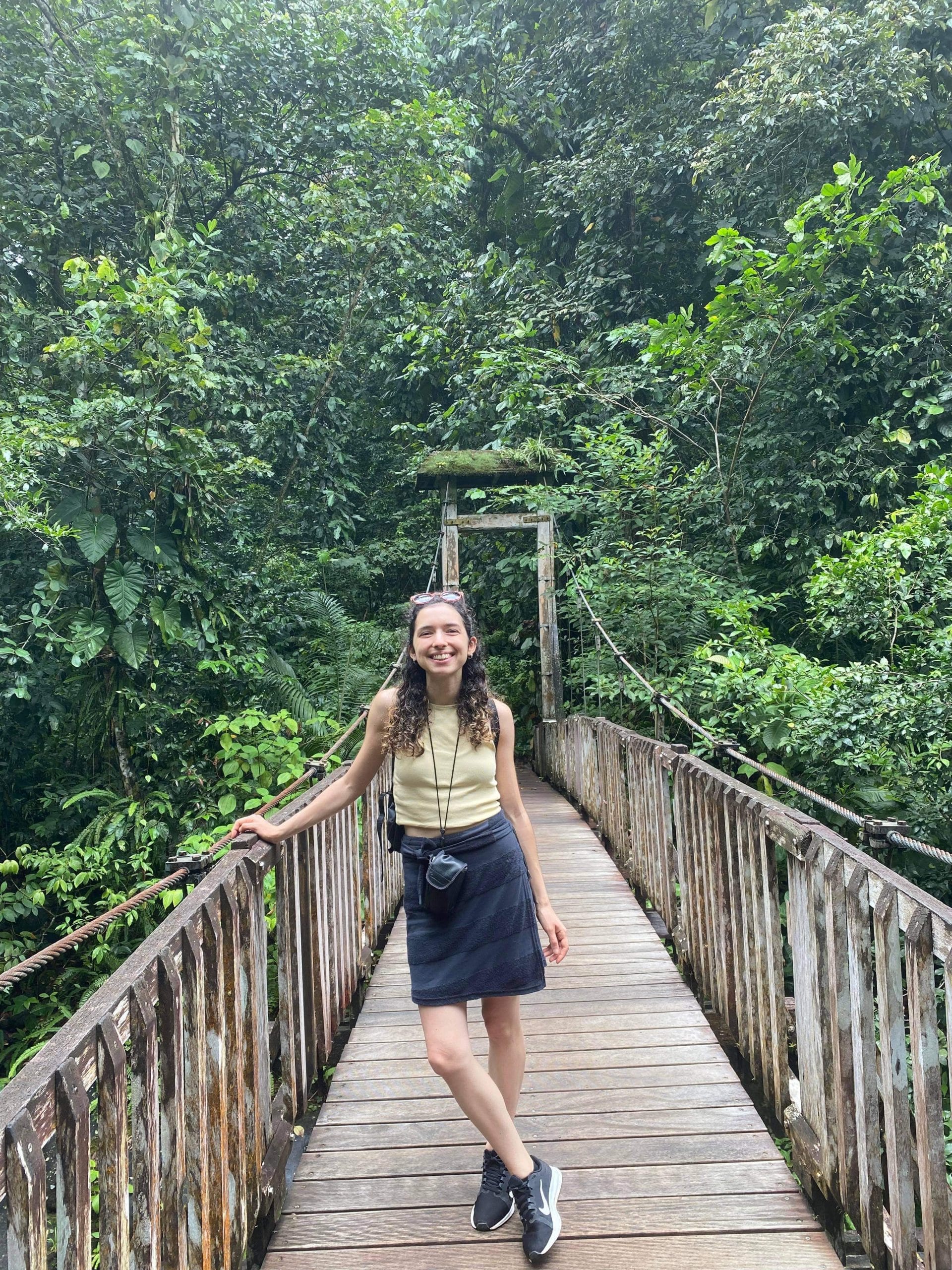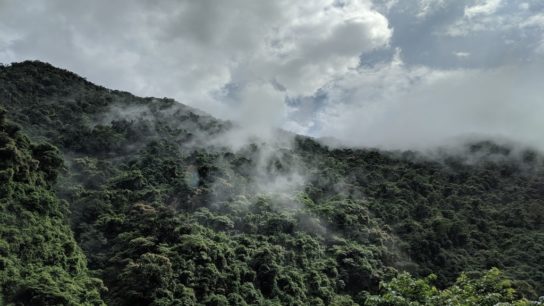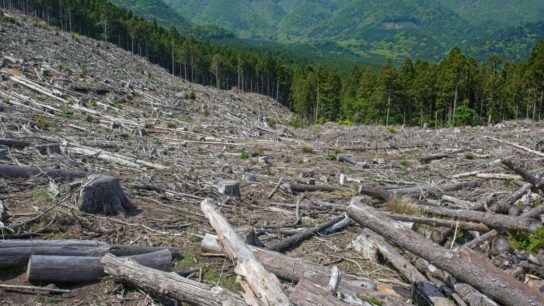Today, many conservation projects are located in the Global South. Yet most of them lack emphasis on the consequences they can have on local livelihoods who often depend on natural resources. This article explores how the Mashpi nature reserve in Ecuador impacts local livelihoods. The findings are based on field research and interviews conducted on the ground in the Choco-Andino region of Ecuador.
—
“Some people have access to knowledge that others do not have […]. The other people do not think about what’s going to happen to planet Earth, they are thinking about what they’re going to eat the next day because they don’t have money,” said one of the two teachers from the village school.
In Mashpi, a rural village of no more than 200 people bordering the Choco-Andino cloud forests of Ecuador, tensions emerge between making a living and saving the land. Located 120 kilometres from Quito, the capital of Ecuador, the village has witnessed the growth of environmentalism in recent years. Environmental protection has emerged not only from a movement of local activists but also from an economic interest brought by the growth of ecotourism.
However, whilst concerns about the environment are growing throughout Ecuador, remote communities still struggle to meet their basic needs. And it is these communities that, in the context of land privatisation and tourism, are often marginalised.
Whilst wealthy Western tourists are increasing in the region, the economic benefits of such growth is not felt when walking throughout the small village: houses with rooms with no walls; fresh produce and milk delivered only once a week by trucks coming from the city; a village school consisting of two classrooms that only opens on mornings; and a damaged bridge to access the village, whose reparation have to be planned and paid for by the community since no money is flowing in from the state. These are the realities of rural life in Ecuador.

A few kilometres on the other side of the river is a tropical paradise of cloud forests and biodiversity, with trails made for tourists and a luxurious hotel built to experience the wilderness, or what is left of it. The contrast is striking. Ecotourism is supposedly financing the protection of the forest, allowing for international income to flow into local needs. Yet, outside of the boundaries of these private lands, people lack economic resources and basic infrastructures for their day-to-day life.
Private conservation has seen its rise in recent years, especially in the Global South, where “green development” promising the protection of environmental resources whilst promoting local economic growth is promoted. In Mashpi, ecotourism has become a profitable way for private investors to keep the land intact whilst offering wealthy tourists a wilderness experience.
Ecotourism is certainly a more sustainable way to make use of the land as an economic resource, notably in a local context of intense logging activities and illegal hunting of wildlife. Yet, despite being a good step towards environmental protection, the industry only profits a small number of individuals, whilst marginalising rural communities from their own land.
You might also like: Explainer: What Is Ecotourism?
Who Is to Blame For It?
One reason for such inequalities is the lack of governmental support and regulations, which leads to the privatisation of activities and services and thus reinforces the uneven distribution of power and wealth.
In a national context where the central government offers no on-the-ground presence to enforce laws and regulations, the privatisation of land for conservation seems like the only option. Not having laws in place would allow for the unregulated exploitation of land and natural resources exploited by various actors through logging, agriculture, illegal mining, and hunting activities.
What happens in Mashpi is not unique. Today, many low-income countries are put at the centre of conservation priorities due to their unique biodiversity and landscapes, yet none of them have enough political and economic strength to support effective environmental protection. Consequently, money flows through alternative pathways: civil society on one hand and private actors on the other.
But how could both be reconciled? Can economic development be coupled with environmental protection, even within the poorest regions on Earth?
Everything comes at a price. If conservation happens on the private level, uneven power relations are likely to arise, with communities often marginalised in the process. Yet, today, relying on public efforts is not sufficient. The poor economy of Ecuador forces the government to support oil extraction, since it brings more money in and is thus more profitable for the government. And despite the country’s wills to protect its lands and recent efforts to enhance indigenous rights and improve environmental protection, the efforts on the ground are still minimal.
Ecuador’s Legacy of Poor Land Tenure Regimes
Exploring the history of land tenure and governance in the region is crucial to understand the role of land conservation in Ecuador.
Land rights are poorly established across rural Ecuador, with land often belonging neither to the states nor to the people. Land ownership is either overlapping or non-existent, and this long history of non-existing land titles can often complicate or prolong the process of land titling.With land ownership comes rights, control, and power. Often, when land is bought from the poorest, power is also taken from them.
Conservation projects are inherently embedded within these local land tenure regimes.
In recent years, the term “green grabbing” has been used to refer to the appropriation of land and resources for environmental ends. If not done correctly, conservation can recreate new forms of colonialism and land grabbing, leading to the marginalisation and sometimes relocation of local populations.
In Ecuador particularly, decades of land grabbing still impact people’s perception of land tenure to this day. In the late 1970s, colonialists, known as “colonos,” took over fallow lands, which were previously owned by indigenous communities, often for petroleum expansion or logging. The Green Revolution of the 1990s facilitated the growth of large agricultural corporations and led to the marginalisation of small farmers, thus reinforcing the sense of fear towards large-scale land ownership.
Histories of land use tenure are often present within the memory of local communities. In Mashpi, the creation of the private nature reserve can be seen as a new form of colonialism, as it recreated power dynamics similar to those of the colonial history of the region.

When interviewing members of the neighbouring community, many highlighted how only a small fraction of it was employed at the reserve. Most employees come from the city and have applicable skills such as English, a valuable asset to be employed as tour guide in the reserve. Moreover, the money earned by private tourism was not redistributed to the local community and only profited the reserve owners and employees. The project thus not only took away land from the community but it also created little new economic opportunities.
Creating Opportunities Despite Inequalities
Not everything is black and white.
When I interviewed members of the local community living right next to the new reserve, many of my interviewees reported that once they realised that the eco-tourist lodge created jobs and employed people from the communities, they started perceiving the project differently.
Within the region, work opportunities, notably with long-term contracts and fair salaries, as offered in Masphi, are rare for local inhabitants. “When they first hired me to work, they paid me 170 dollars at that time, and I had never held 170 dollars in my life,” one of the rangers employed from the village said, pointing at his hands. Whilst the land was indeed privatised and restrictions were given over resource use, the creation of the reserve also allowed for new job opportunities to rise.
The new source of income of some community members also meant that a greater amount of money flowed within the community. One interviewee from the local village said: “I have a sister who has a business in the community of Mashpi […]. With my money that I earn here I go and make purchases […] so the money that we generate here is redistributed in the area.”
Moreover, with the growth of ecotourism in the region and the support from local NGOs, neighbouring communities have come to undertake their own tourism project based around nature. The natural assets of the village, notably the Mashpi river and its waterfalls, are promoted through the construction of infrastructures (wooden pavilion, benches) for tourists to enjoy the riverside.
The growth of the tourism sector remains an improvement for rural communities since it allows them to be in charge of their own businesses, produce revenues and make use of the natural assets present in their lands.Yet to this day, most of the revenues from ecotourism are generated in the private reserve, and community-based activities remain poorly profitable.
Can Conservation and Development Co-Exist?
In short, the answer is yes. Conservation can, in some cases, lead to economic growth and favour local communities. However, most projects coming from private actors or international organisations, if not conducted carefully, risk falling into colonialist and neoliberal dynamics.
Some of the most important things to consider when implementing a new conservation project are to include all actors in conversations and to promote collaborative decision-making approaches. This means getting local communities involved from the early stages of the project and making sure that all actors are beneficiaries of the project. Another important aspect is to propose alternative support to local inhabitants to help with the transition towards new local land-use practices – such as jobs training and English classes for tourism.
Conservation and tourism, if done ethically, can provide the Global South with a new economic pathway that benefits both nature and the people.
This story is funded by readers like you
Our non-profit newsroom provides climate coverage free of charge and advertising. Your one-off or monthly donations play a crucial role in supporting our operations, expanding our reach, and maintaining our editorial independence.
About EO | Mission Statement | Impact & Reach | Write for us














